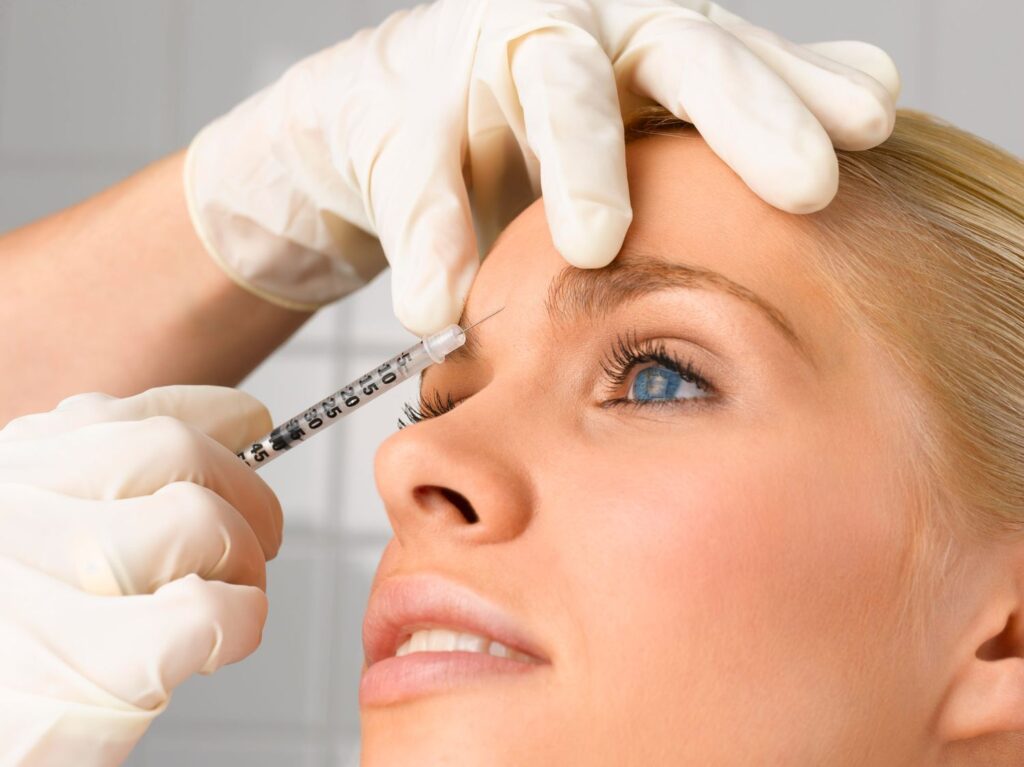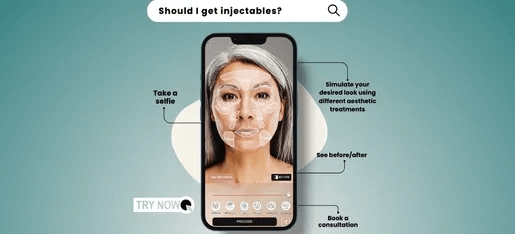Even before the pandemic-induced plastic surgery Zoom Boom, injectables have been rising for the past decade. According to the American Society of Plastic Surgeons 2020 Plastic Surgery Statistics Report, dermal fillers remained the most popular minimally invasive procedure, despite surgeons’ offices being closed for part of the year.
With growing transparency about cosmetic procedures from celebrities and your social circle, you’re probably already well aware that dermal fillers are more popular than ever. But what you might not know the differences between the options and how to choose which one is right for you, should you be interested in trying the treatment.
Keep reading to get all the details on Botox and fillers, straight from the experts.
What Is Botox?
First, it’s important to note that Botox is the brand name for a specific Botulinum neurotoxin by Allergan. Aesthetics. There are currently four FDA-approved neurotoxins in the U.S.: Botox, Dysport, Xeomin, and Jeuveau.
Botulinum neurotoxin is best used for wrinkles, frown lines, and crow’s feet. Botox is the only neurotoxin that has FDA approval as a treatment for crow’s feet and excessive sweating, but any neurotoxin can treat these concerns. This is often called “off-label” use.
“Botox (Botulinum toxin) is a neuromodulator used to relax the muscles in our face and neck thereby decreasing the appearance of fine lines and wrinkles,” says Dr. Adrienne O’Connell, Medical Director and Founder of Laguna Beach Aesthetics. “It’s a neurotoxic protein produced by the bacterium Clostridium botulinum. It prevents the release of acetylcholine (a neurotransmitter) from the axon endings at the neuromuscular junction, causing flaccid paralysis. When ‘paralyzing’ the muscles in our face, it prevents the formation of fine lines and wrinkles.”
Expect for the Botox to take effect a day or two after the injection, with full results in one to two weeks.
Dr. Smita Ramanadham, a plastic surgeon based in New Jersey, says Botox and other neuromodulators typically last three to four months, which is when patients will typically return for their next treatment.
What Are Fillers?
Filler is a compound, usually comprised of hyaluronic acid [which also occurs naturally in the body], and does exactly what the name suggests — it fills in deep wrinkles and restores volume to areas where it is lost. The most popular hyaluronic acid fillers include the brands Juvéderm, Restylane, RHA Collection, Revanesse, and Belotero.
“These areas can include the nasolabial folds, marionette lines,or tear trough,” Dr. Ramandham says. “It can also be used to replace fat that we lose normally as we age, such as in the cheeks and temples.”
Additionally, filler can be used to augment areas of the face and add definition, such as the jawline, lips, or chin. Off-label, fillers are used on the earlobes and hands to minimize the look of crepey skin.
Hyaluronic acid isn’t the only type of fillers. Brands like Sculptra and Radiesse have different mechanisms and are made from different ingredients. “Sculptra is Poly-L-Lactic acid, which is injected and builds volume and collagen over time, versus Radiesse, which is comprised of Calcium Hydroxylapatite that produces immediate volume while improving collagen over time,” Dr. Ramandham explains.
Depending on the area you inject and the type of filler you get, the results can last six months up to two years. Dr. Ramandham says patients generally return for treatment one or two times a year.
What’s The Difference Between Botox and Fillers?
The only similarity between Botox and fillers is that they’re both administered with a syringe. The compounds do completely different things. Botox helps to eliminate wrinkles that come from muscular contractions by keeping those muscles from moving, whereas fillers are effective for areas that are hollowing, flattening, or where fat is moving.
That being said, you don’t necessarily have to pick one over the other. Doctors may opt to use a combination of both depending on the areas you wish to treat and your desired results.
“Most of the time, we pair Botox with fillers when restoring a patients youthful appearance. Botox will help decrease fine lines and wrinkles created by muscle movement, whereas fillers will increase fullness where there is a loss of volume,” Dr. O’Connell says. “When assessing a patient, it is crucial to assess skin texture, tone, laxity and volume. This will help determine what products are needed and where.”
Your doctor may also use a few different fillers. “Different fillers are also chosen based on the location of injection and the desired effect,” Dr. Ramanadham says. “In regards to hyaluronic acid fillers for example, these differ in their rheological properties, meaning some are thinner and more fluid while others may have more lifting power or may be stiffer.”


